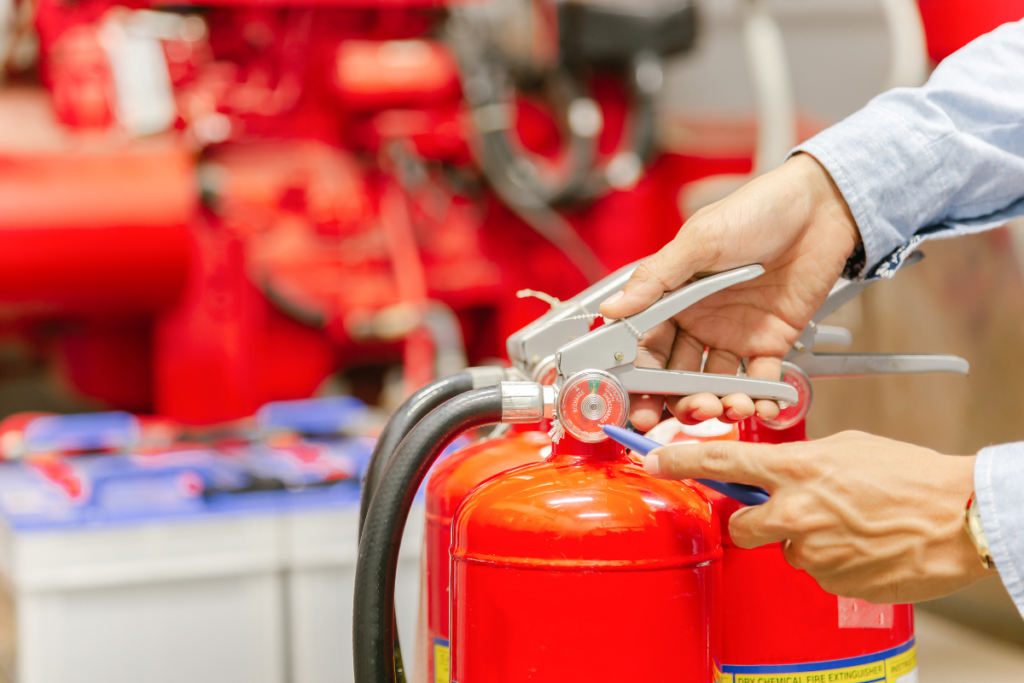
As a business owner, ensuring the safety of your employees, customers, and property should be a top priority. One crucial aspect of maintaining a safe work environment is conducting annual fire inspections.
These inspections help identify and address potential fire hazards, ensure compliance with fire safety regulations, and ultimately protect your business from the devastating consequences of a fire. If you are looking for an annual fire inspection service provider, you may contact Custom Fire & Sprinkler Services Limited.
Why Annual Fire Inspections are Important
Annual fire inspections play a critical role in safeguarding your business against the risks posed by fire incidents. Here are some key reasons why these inspections are essential:
- Identifying and mitigating fire hazards before they escalate
- Ensuring compliance with local fire safety regulations and building codes
- Protecting employees, customers, and assets from potential harm
- Reducing the risk of fire damage and related financial losses
- Promoting a culture of safety and preparedness within the organization
Essential Tips for Conducting Annual Fire Inspections
To make the most of your annual fire inspections and ensure the safety of your business, consider the following tips:
1. Schedule Regular Inspections
- Plan and schedule annual fire inspections well in advance to ensure they are conducted consistently.
- Consider hiring a professional fire safety inspector to perform a thorough assessment of your premises.
2. Create a Fire Safety Plan
- Develop a comprehensive fire safety plan that outlines emergency procedures, evacuation routes, and designated assembly points.
- Ensure all employees are trained on fire safety protocols and know how to respond in case of a fire.
3. Regularly Test Fire Alarms and Extinguishers
- Test fire alarms, smoke detectors, and fire extinguishers on a regular basis to ensure they are functioning properly.
- Replace batteries in smoke alarms and conduct regular maintenance on fire extinguishers as needed.
4. Maintain Clear Exit Routes
- Keep exit routes clear of obstructions and ensure they are well-lit and easily accessible in case of an emergency.
- Post clear signage indicating exit routes and emergency procedures throughout the premises.
Best Practices for Fire Safety Compliance
In addition to conducting annual fire inspections, following these best practices can help ensure that your business remains compliant with fire safety regulations:
1. Stay Informed
- Stay up to date on relevant fire safety regulations and codes that apply to your business.
- Attend training sessions and seminars on fire safety to enhance your knowledge and awareness of best practices.
2. Conduct Regular Employee Training
- Provide regular training sessions for employees on fire safety procedures, including evacuation drills and fire extinguisher use.
- Ensure that new hires receive comprehensive training on fire safety protocols as part of their onboarding process.
3. Invest in Fire Suppression Systems
- Consider installing fire suppression systems such as sprinklers or fire curtains to enhance the safety of your premises.
- Regularly inspect and maintain fire suppression systems to ensure they are in proper working condition.
4. Conduct Mock Drills and Scenario Testing
- Organize regular fire drills and scenario testing to assess the effectiveness of your fire safety plan and identify areas for improvement.
- Review and debrief after each drill to discuss what went well and address any issues that arose during the simulation.